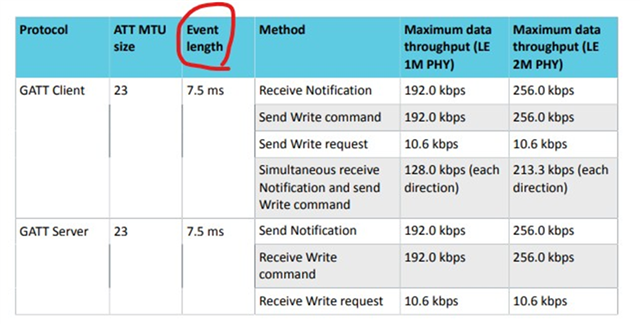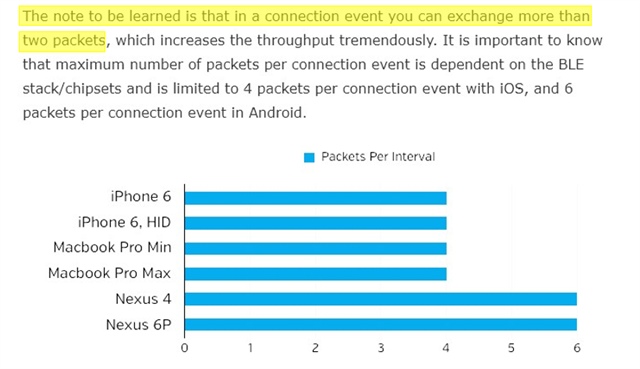Hi All,
As far as I know , BLE Thrughput is basically set around a few parameters => 1. NRF_SDH_BLE_GAP_DATA_LENGTH
2. NRF_SDH_BLE_GATT_MAX_MTU_SIZE
3. NRF_SDH_BLE_GAP_EVENT_LENGTH
My question is => Does the value of NRF_SDH_BLE_GAP_EVENT_LENGTH represent the packets that can be sent in each connection interval?
According to this table :

If the event length equal 7.5ms,does it mean that it can transmit 6 packets?
Best regards,
Kai






